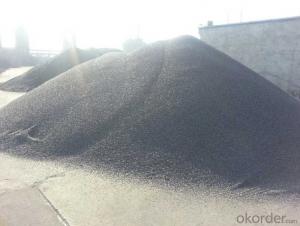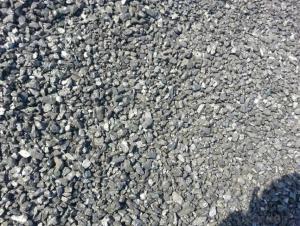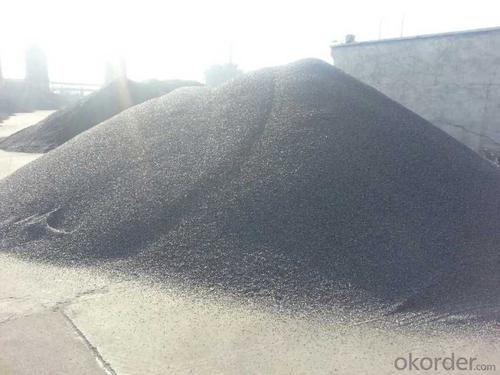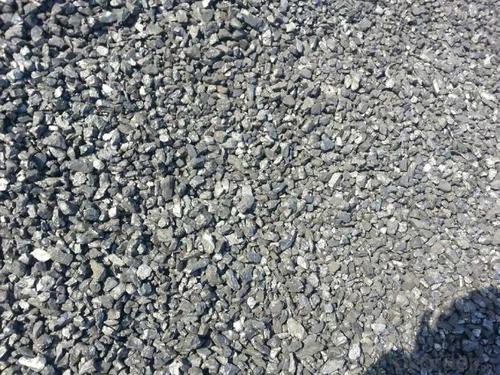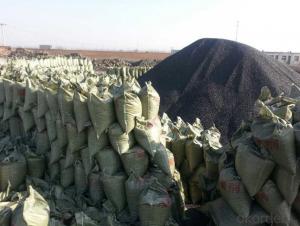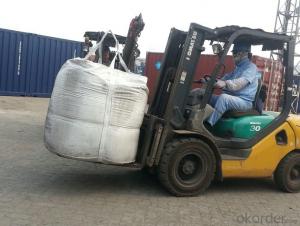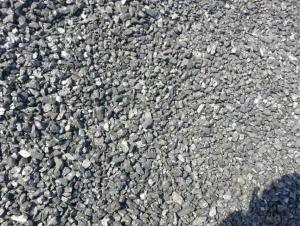Charge Coke FC90 with high and stable quality
- Loading Port:
- Tianjin
- Payment Terms:
- TT OR LC
- Min Order Qty:
- 20 m.t.
- Supply Capability:
- 3000 m.t./month
OKorder Service Pledge
OKorder Financial Service
You Might Also Like
Packaging & Delivery
25kgs/50kgs/1ton per bag or as buyer's request
Specifications
Calcined Anthracite
Fixed carbon: 90%-95%
S: 0.5% max
Size: 0-3. 3-5.3-15 or as request
It used the high quality anthracite as raw materials through high temperature calcined at over 2000 by the DC electric calciner with results in eliminating the moisture and volatile matter from anthracite efficiently, improving the density and the electric conductivity and strengthening the mechanical strength and anti-oxidation. It has good characteristics with low ash, low resistvity, low sulphur, high carbon and high density. It is the best material for high quality carbon products.
Advantage and competitive of caclined anthracite:
1. strong supply capability
2. fast transportation
3. lower and reasonable price for your reference
4.low sulphur, low ash
5.fixed carbon:95% -90%
6..sulphur:lower than 0.3%
General Specification of Calcined Anthracite:
| FC | 95 | 94 | 93 | 92 | 90 |
| ASH | 4 | 5 | 6 | 6.5 | 8.5 |
| V.M. | 1 | 1 | 1 | 1.5 | 1.5 |
| S | 0.3 | 0.3 | 0.3 | 0.35 | 0.35 |
| MOISTURE | 0.5 | 0.5 | 0.5 | 0.5 | 0.5 |
Pictures
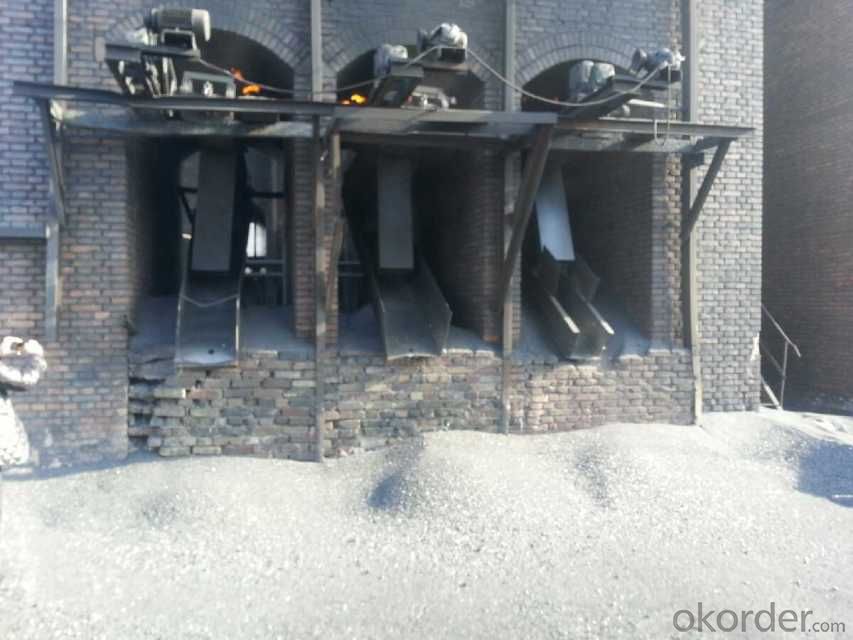
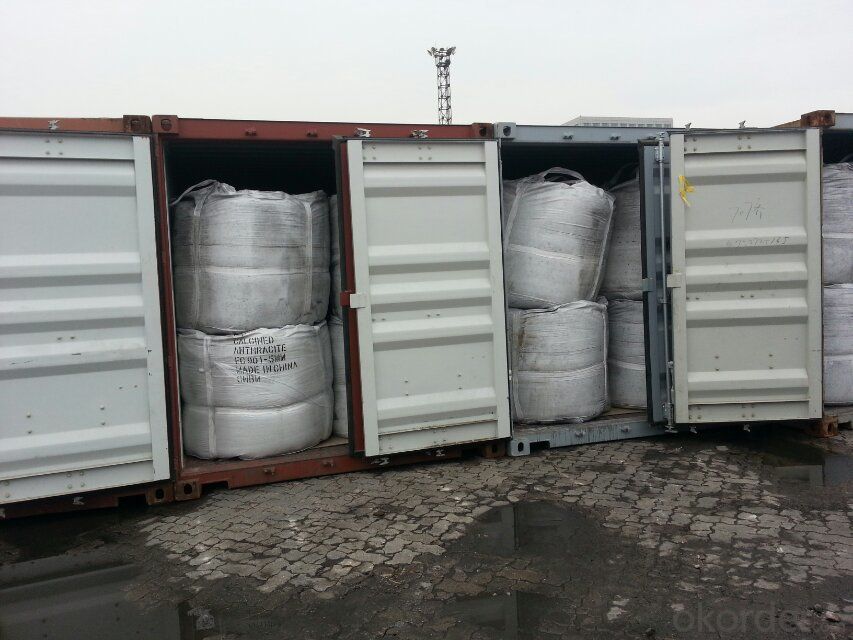
- Q: How does carbon form?speed
- How is coal formed?Coal is known as black gold, the food industry, it is one of the main energy use of the human world since eighteenth Century. Although its important position has been replaced by oil, but in the future for a long period of time, due to the exhaustion of petroleum, inevitable decline, but because of the huge reserves of coal, and the rapid development of science and technology, the new technology of coal gasification is becoming more mature and widely used, coal will become one of the production and life of human beings in an irreplaceable energy.Coal is millions of years of plant leaves and roots, stacked on the ground with a layer of very thick black humus, due to changes in the earth's crust constantly buried underground, long isolated from the air and under high temperature and pressure, after a series of complex physical and chemical changes and other factors, the formation of black however, this fossil, is the coal forming process.The thickness of coal seam in a coal mine and the crust drop speed and accumulation amount of plant remains. The crust decreased rapidly, the plant remains piled thick, the coal seam is thick, on the other hand, the crust decline slowly, the accumulation of plant remains thin, the mine coal seam is thin. The tectonic movement of the crust to the original level of coal seam folds and faults occur, some underground coal seam buried deeper, and squeezed to the surface, even above the ground, more likely to be found. There are some relatively thin coal seam, and the area is not large, so there is no value related to the formation of coal mining, so far not find the update statement.
- Q: What do you stand for?Tar, smoke, nicotine, and carbon monoxide. What do you mean? What's the size of the smoke, or the size of the smoke? What's the connection? Smoking is harmful, so how do you choose to smoke smaller cigarettes?
- The smoke was in the size of a smoker is refers to the amount of nicotine. The smoke is enough to mouth after the majestic. Enough cool,A novice at it. I think most of the carbon monoxide content. Carbon monoxide content is high after the head halo. The novice, this must be kept large. Tar, tar that smoke burning more fully the feeling in the mouth sweet, sweet fragrance..When is the strength of cigarettes and their taste.
- Q: Want advanced reinforcement, but I do not know where the high furnace rock carbon, looking for someone to guide...
- Mall. In fact, BUG can be card out! Inside the palace there is that BUG, but I personally think that no use, I used to strengthen the use of advanced carbon weapons on 12, even 3 did not become a storm, this is only the way to make money TX it
- Q: How is carbon used in the production of carbon nanomaterials?
- Carbon is a crucial element in the production of carbon nanomaterials, as it serves as the building block for their unique structure and properties. There are various methods used to produce carbon nanomaterials, such as carbon nanotubes and graphene, all of which rely on the manipulation and organization of carbon atoms. One common method for producing carbon nanomaterials is through chemical vapor deposition (CVD). In this process, a carbon-containing gas, such as methane or ethylene, is introduced into a high-temperature furnace. Inside the furnace, the gas decomposes, releasing carbon atoms. These carbon atoms then reassemble and form nanoscale structures, such as carbon nanotubes or graphene, on a substrate or catalyst material. Another approach involves the vaporization of carbon-containing compounds, such as carbon black or graphite, using techniques like laser ablation or arc discharge. The vaporized carbon then condenses and solidifies into carbon nanomaterials with specific structures and properties. In both methods, the control of temperature, pressure, and the presence of catalysts or other additives allows for the precise manipulation of the carbon atoms, resulting in the desired carbon nanomaterials. The unique arrangement of carbon atoms in these materials, such as the hexagonal lattice structure of graphene or the cylindrical structure of carbon nanotubes, gives rise to their exceptional mechanical, electrical, and thermal properties. Overall, carbon plays a fundamental role in the production of carbon nanomaterials by providing the necessary atoms for their formation and determining their structure and properties. This knowledge and control over carbon's behavior at the atomic level enable scientists and engineers to develop nanomaterials with a wide range of applications, from electronics and energy storage to medicine and environmental remediation.
- Q: What is diamond?
- Valued highly for its exceptional hardness, brilliance, and rarity, diamond is a precious gemstone. It is a form of carbon that has undergone intense heat and pressure deep within the Earth's mantle, resulting in its unique crystal structure. Diamond is known for its dazzling sparkle and is transparent and colorless, though it can also occur in various colors, such as yellow, blue, pink, and green, due to impurities during its formation. The brilliance of diamonds is maximized by cutting and polishing them into different shapes, making them popular in jewelry. Moreover, their remarkable durability allows them to be extensively used in industrial applications, including cutting, grinding, and drilling, due to their strength. Ultimately, the extraordinary beauty, durability, and scarcity of diamond have made it one of the world's most sought-after gemstones.
- Q: How does carbon affect the formation of cyclones?
- Carbon dioxide (CO2) and other greenhouse gases, primarily emitted through human activities, contribute to the warming of the Earth's atmosphere. This increase in temperature impacts the formation and intensity of cyclones. Warmer sea surface temperatures provide more heat and moisture, fueling the development and strengthening of cyclones. Additionally, higher levels of carbon dioxide may lead to changes in atmospheric circulation patterns, potentially affecting the location and frequency of cyclone formation.
- Q: What is the symbol for carbon?
- The symbol for carbon is "C".
- Q: Why are biological molecules carbon based molecular aggregates?
- Because living things are living organisms, most of them consist of organic compounds, which are carbon compounds, and carbon chains are the main body
- Q: What are the effects of carbon emissions on the stability of alpine ecosystems?
- The effects of carbon emissions on the stability of alpine ecosystems are significant and far-reaching. Carbon emissions, primarily in the form of carbon dioxide, contribute to the greenhouse effect and subsequent climate change. This leads to a series of impacts that directly affect the stability of alpine ecosystems. One of the most noticeable effects is the increase in global temperatures. As temperatures rise, glaciers and snow caps in alpine regions melt at accelerated rates. This has a profound impact on the availability of freshwater resources, as alpine regions are often the source of major rivers and lakes. Reduced water availability not only affects the survival of plant and animal species but also impacts human populations relying on these water sources for agriculture, drinking water, and hydropower generation. Another consequence of carbon emissions is the alteration of precipitation patterns. Climate change disrupts the balance of rainfall and snowfall in alpine ecosystems, leading to more frequent and severe droughts or intense rainfall events. Such changes in precipitation patterns can result in soil erosion, landslides, and the overall destabilization of alpine terrain. This poses a threat to the survival of alpine flora and fauna, as well as the loss of vital habitats and biodiversity. Furthermore, carbon emissions contribute to the acidification of alpine lakes and rivers. Increased carbon dioxide in the atmosphere dissolves in water bodies, forming carbonic acid. This acidification negatively affects aquatic organisms, such as fish and amphibians, by impairing their reproductive abilities, altering their behavior, and even causing mortality. It also disrupts the delicate balance of alpine freshwater ecosystems, leading to a decline in species diversity and ecological resilience. Lastly, carbon emissions can indirectly impact alpine ecosystems through the spread of invasive species. Climate change creates favorable conditions for the expansion of non-native plant and animal species into higher elevations. These invasive species can outcompete native flora and fauna, disrupt ecological interactions, and ultimately lead to the displacement or extinction of native species. This disrupts the natural balance of alpine ecosystems and compromises their stability. In conclusion, carbon emissions have profound effects on the stability of alpine ecosystems. These emissions contribute to the melting of glaciers, alteration of precipitation patterns, acidification of water bodies, and the spread of invasive species. These impacts disrupt the balance of alpine ecosystems, leading to the loss of biodiversity, habitat degradation, and reduced availability of freshwater resources. Urgent action to mitigate carbon emissions is crucial to preserve the stability and functioning of these fragile ecosystems.
- Q: How is carbon used in the production of carbon fiber?
- Carbon is used in the production of carbon fiber by being subjected to high temperatures and combined with other elements to create a material that is strong, lightweight, and resistant to heat and chemicals.
Send your message to us
Charge Coke FC90 with high and stable quality
- Loading Port:
- Tianjin
- Payment Terms:
- TT OR LC
- Min Order Qty:
- 20 m.t.
- Supply Capability:
- 3000 m.t./month
OKorder Service Pledge
OKorder Financial Service
Similar products
Hot products
Hot Searches
